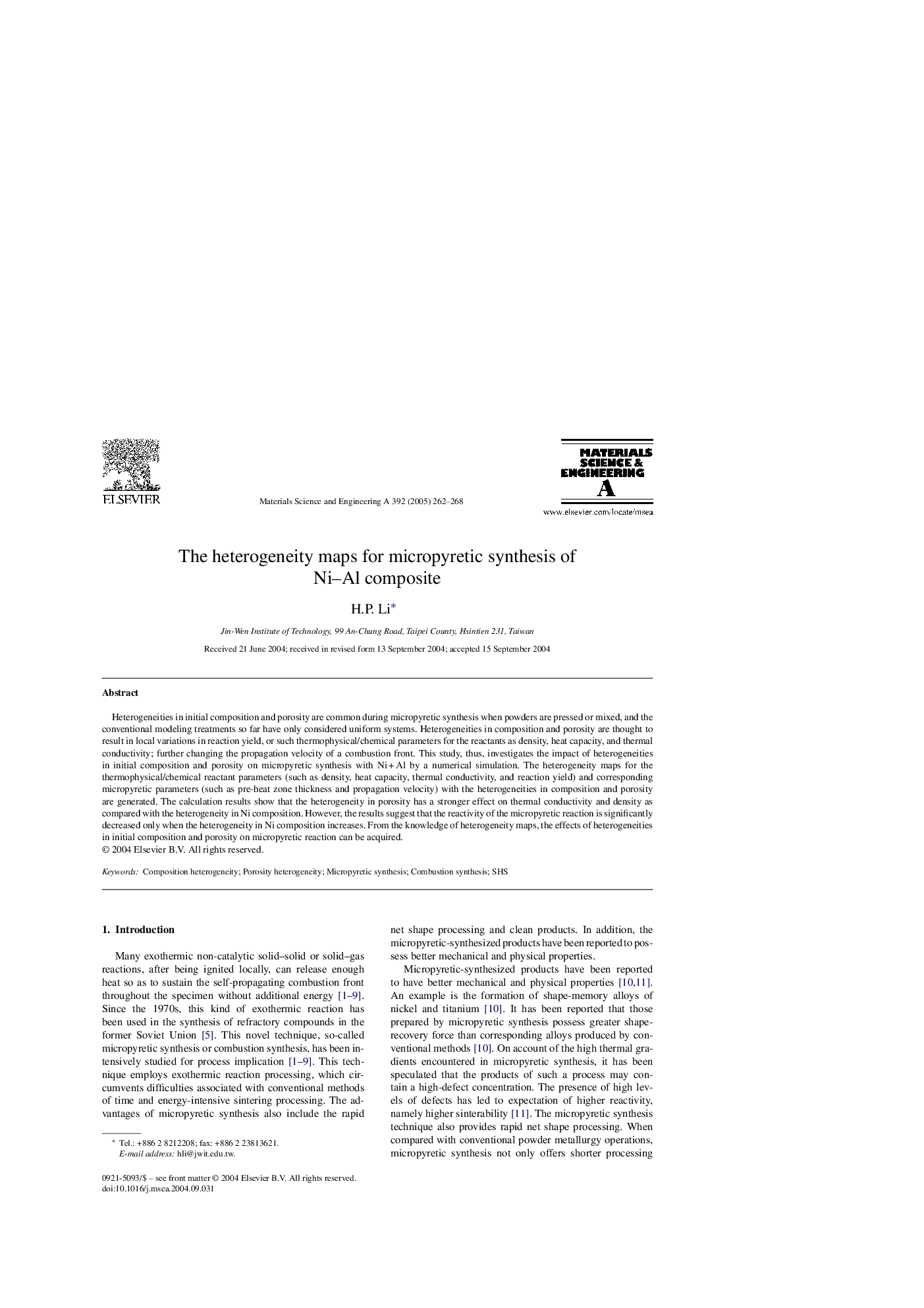| Article ID | Journal | Published Year | Pages | File Type |
|---|---|---|---|---|
| 9796567 | Materials Science and Engineering: A | 2005 | 7 Pages |
Abstract
Heterogeneities in initial composition and porosity are common during micropyretic synthesis when powders are pressed or mixed, and the conventional modeling treatments so far have only considered uniform systems. Heterogeneities in composition and porosity are thought to result in local variations in reaction yield, or such thermophysical/chemical parameters for the reactants as density, heat capacity, and thermal conductivity; further changing the propagation velocity of a combustion front. This study, thus, investigates the impact of heterogeneities in initial composition and porosity on micropyretic synthesis with Ni + Al by a numerical simulation. The heterogeneity maps for the thermophysical/chemical reactant parameters (such as density, heat capacity, thermal conductivity, and reaction yield) and corresponding micropyretic parameters (such as pre-heat zone thickness and propagation velocity) with the heterogeneities in composition and porosity are generated. The calculation results show that the heterogeneity in porosity has a stronger effect on thermal conductivity and density as compared with the heterogeneity in Ni composition. However, the results suggest that the reactivity of the micropyretic reaction is significantly decreased only when the heterogeneity in Ni composition increases. From the knowledge of heterogeneity maps, the effects of heterogeneities in initial composition and porosity on micropyretic reaction can be acquired.
Related Topics
Physical Sciences and Engineering
Materials Science
Materials Science (General)
Authors
H.P. Li,
